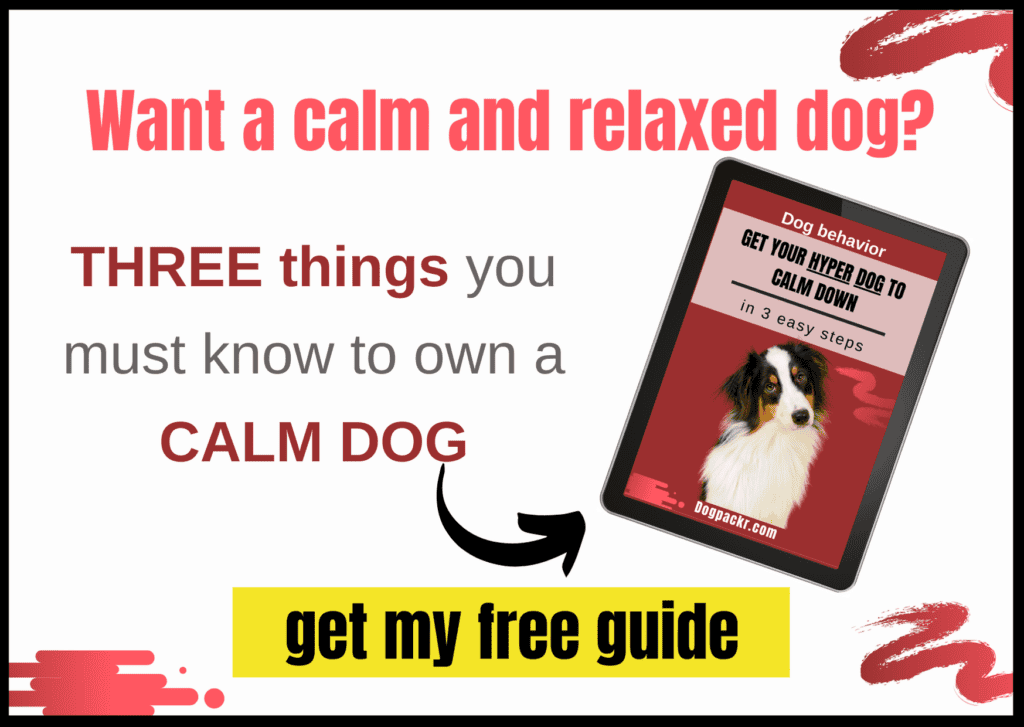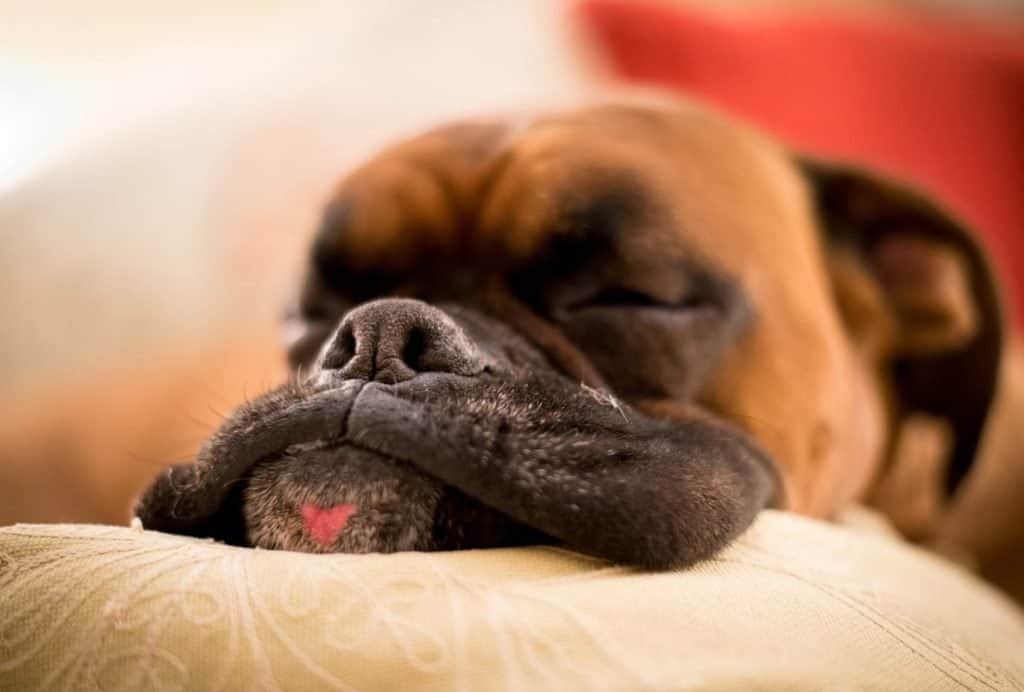
What are dog jowls? What are they good for? And why doesn’t every dog have the same kind of jowls?
This and more is exactly what you’ll learn in this article.
But before we get started, here’s what dog jowls even are: jowls are defined as the loose flesh around a dog’s cheeks, mouth and throat. Although every dog has jowls, we mainly notice big, floppy and droopy jowls that are a characteristic of some breeds. This kind of flesh serves as protection or to assist the dog while swimming.
Table of Contents
What Are Dog Jowls Good For?
All dogs have jowls.
But some dogs really have jowls. Big, floppy things that slobber everywhere.
So why do dogs have them? And more importantly, why have certain kinds of dogs been bred specifically to have big jowls?
There are a few reasons:
- to pick up scents
- to help him breathe while swimming
- protection.
Jowls are actually very useful for dogs. They protect their mouths and help them pick up on scents. If your dog is a super sniffer, also make sure to check out my scent guide.
Breeds like Basset Hounds, Bloodhounds, and Great Danes have large jowls because they were originally bred for tracking and hunting. The thought behind having big jowls is that the jowls helped waft the sent up towards the dog’s nose.
You’ll also frequently find that types of dogs bred for swimming have larger jowls. Jowls actually create air pockets as the dog swims, which helps them breathe more easily.
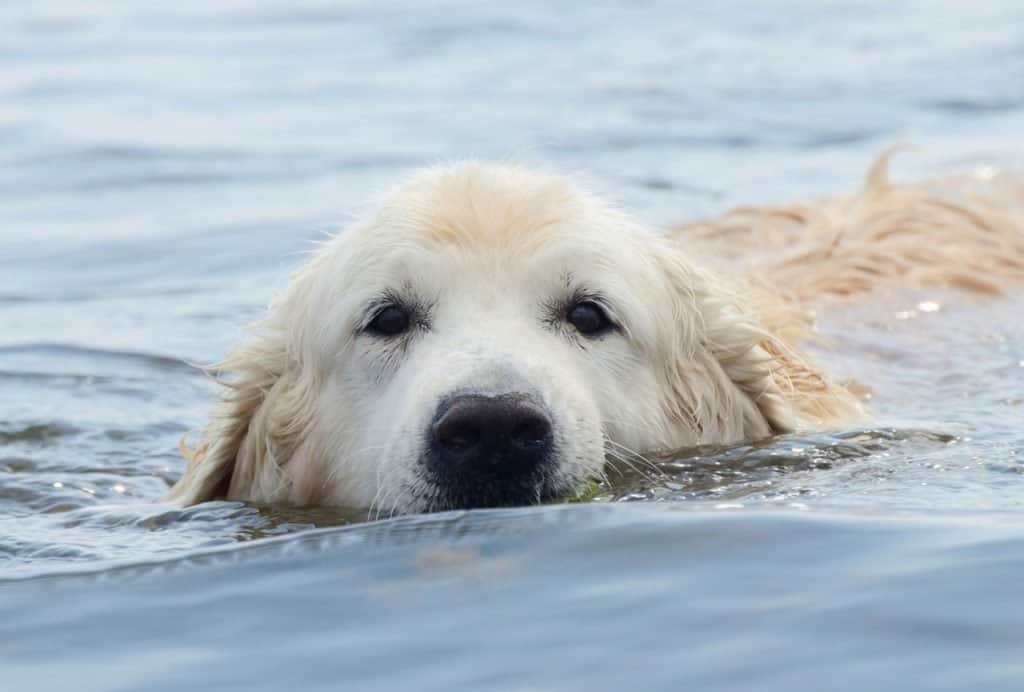
The other main function of a dog’s jowls is protection. You’ve probably noticed breeds like rottweilers and boxers also have large jowls. These breeds were frequently used in fighting rings.
Today, dogfighting is considered inhumane, but there was a time when it was a normal and popular sport. Dogs in these fighting rings had to have a fair amount of protection. A dog’s face is a weak spot, and a solid bite could end a fight. Having large jowls added protection to fighting dogs’ faces.
Nowadays, most dogs aren’t used for what they were originally bred for. Instead of hunting and dogfighting, dogs are bred primarily for companionship.
Having large jowls makes dogs seem more expressive. This is why breeds with large jowls, though not often used for their original purposes, continue to be bred with these features.
Dog Breeds with Jowls
To get you a better understanding of why some breeds have those gigantic jowls, here are a few examples of dog breeds with the biggest cheek-flesh.
Mastiff

The Mastiff was originally bred for blood sports like bull baiting and dog fighting. They were also a useful breed for hunting.
Their jowls came in handy as protection for their faces in fights. A Mastiff’s jowls also help him pick up on scents for hunting.
Newfoundland
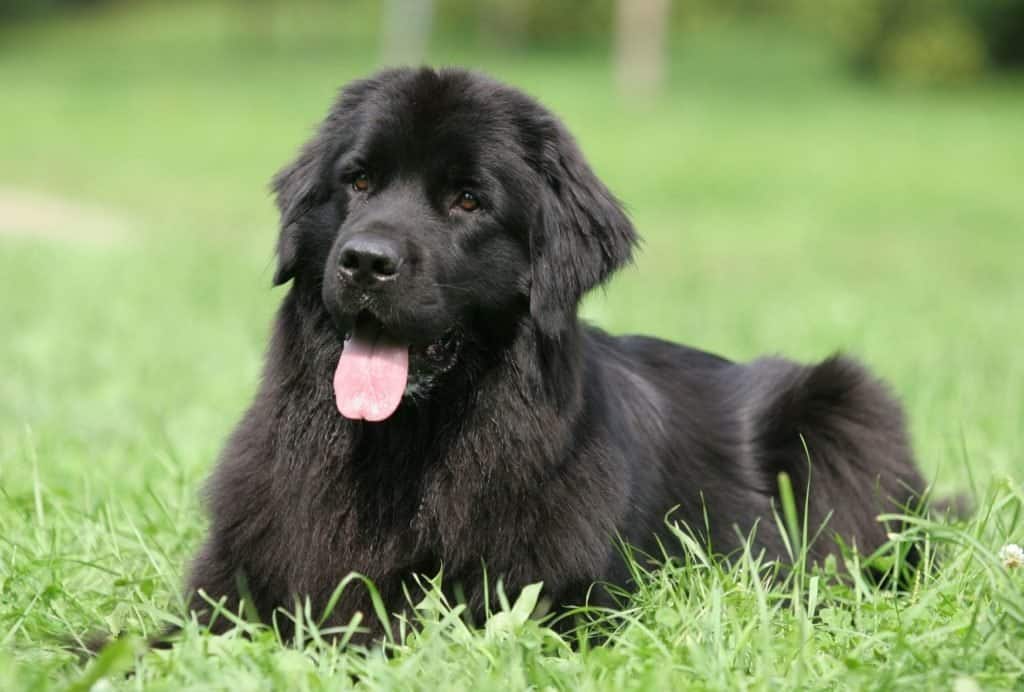
Newfies were originally bred as water dogs. They were bred to have larger jowls both to help with breathing while swimming, and for retrieving things in the water.
Saint Bernard
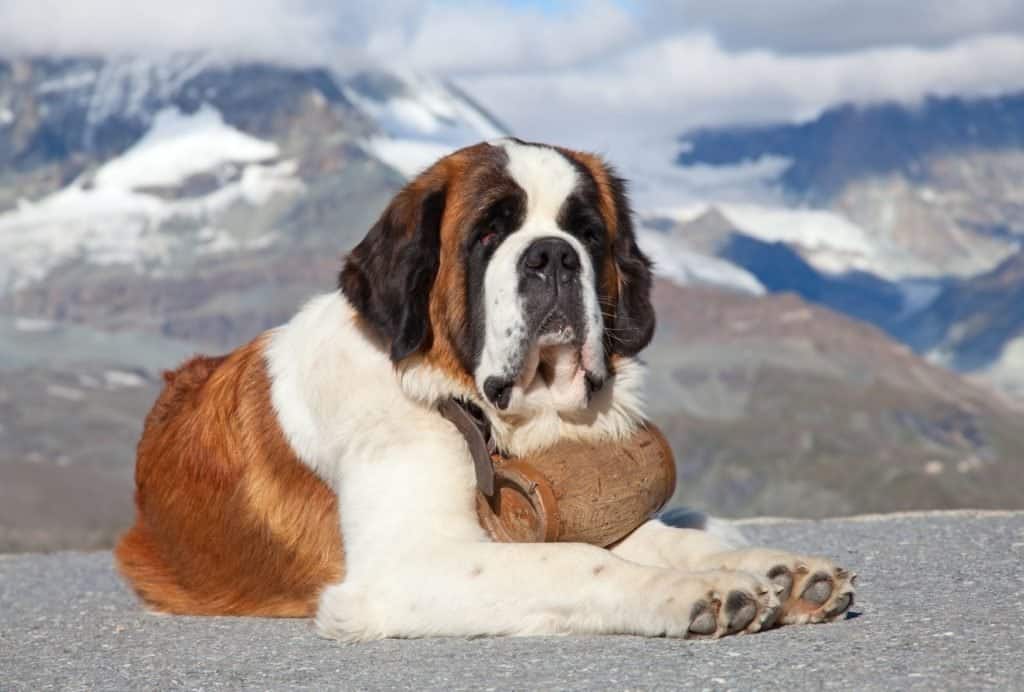
The common image of a Saint Bernard is of one carrying a little cask of brandy around their neck. Supposedly this is because the Saint Bernard was used for the search and rescue of avalanche victims. The little barrel of whiskey was for the survivors to drink to keep warm.
The Saint Bernard’s jowls are large to help track the scents of people buried under snow.
Basset Hound
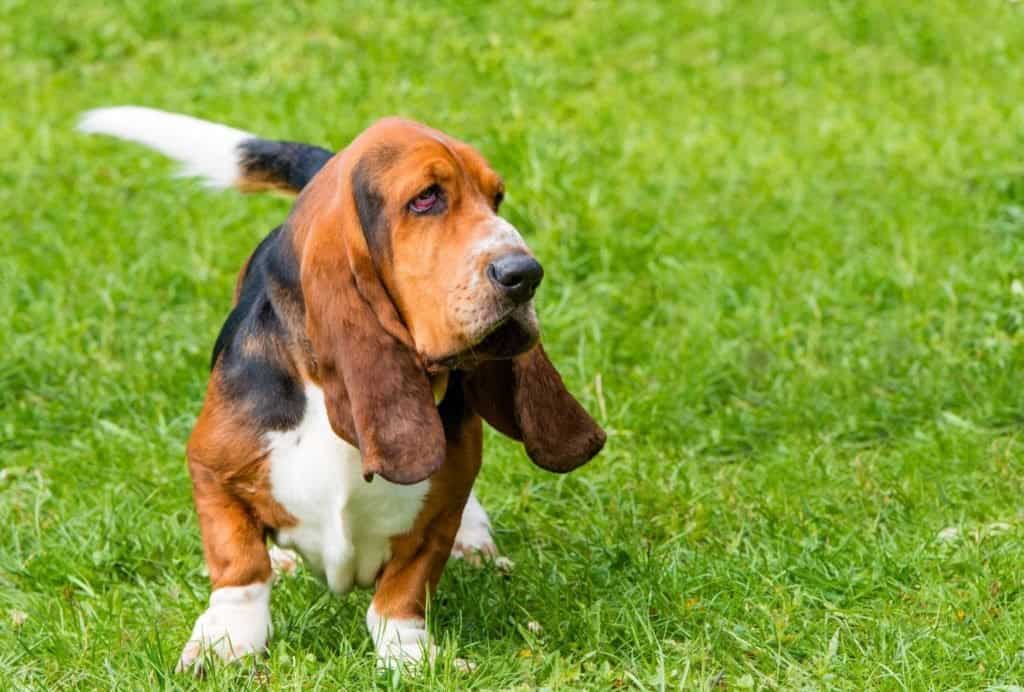
The Basset Hound’s name actually comes from the French word for “low.” These guys were bred to be low to the ground, and to have significant jowls, so that they could track scents easily. They were mostly used for rabbit and deer hunting.
Boxer
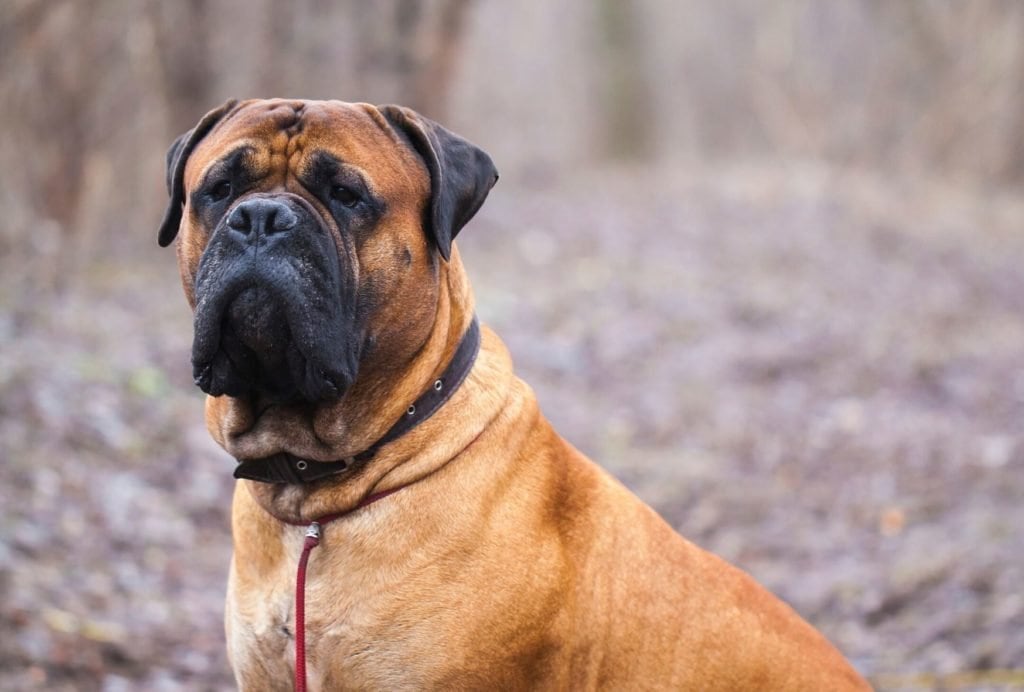
The Boxer was bred to be a fighting dog. They actually come from a breed called the “Bullenbeisser” or “bull biter.” Their jowls allow them extra protection around their face.
Cane Corso
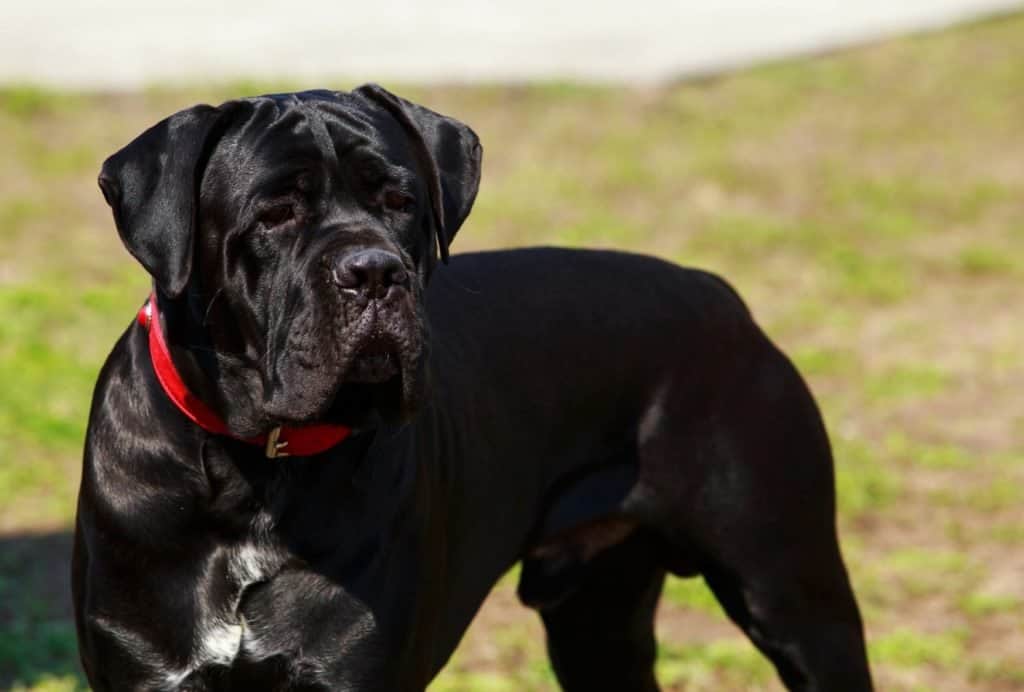
This breed is another that comes from an older line of fighting dogs. Much like the boxer, and other breeds bred for battle of various types, the Cane Corso’s jowls offer protection.
Rottweiler
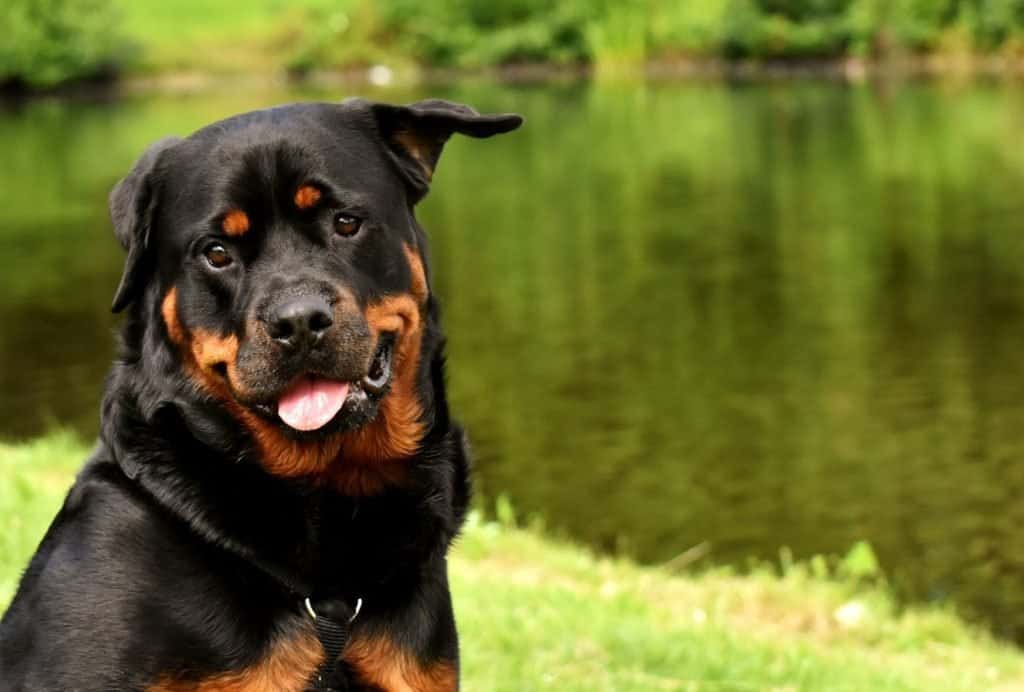
Rottweilers have a reputation for being aggressive dogs. In truth, they are very loving and loyal! They come from Roman ancestry, and because of their sturdy build and loyalty, were used as guard dogs for legions conquering land.
Related article: why are dogs so loyal?
As guard dogs who might occasionally get into scrapes, Rotties’ jowls protect their faces.
Hounds
Hounds were bred primarily for tracking or hunting. Though different hounds were bred to hunt specific prey, they all generally serve the same purpose. Their jowls are used to waft the scents of prey up to their noses.
Bulldog

The Bulldog was originally bred for fighting. Their strong jaws and stocky builds are evidence of their past. Their jowls protected the more sensitive parts of their faces from other dogs’ bites. Today, they are one of the most popular breeds, loved for their expressive features.
Great Dane

Great Danes originate from Germany. They worked first and foremost as hunting dogs, until they were eventually used as guard dogs. Because Great Danes are great dogs for multiple purposes, their jowls serve multiple purposes as well. As hunting dogs, they help to pick up on scents. As guard dogs, they protect the Great Dane’s face.
Possible Dog Jowl Infections and Other Issues
Sure, the jowls on your Boxer are cute, but all that skin requires care! If not properly cleaned or cared for, your dog could end up with an uncomfortable jowl infection.
Here are the most common issues and problems you can face with your dog’s jowls.
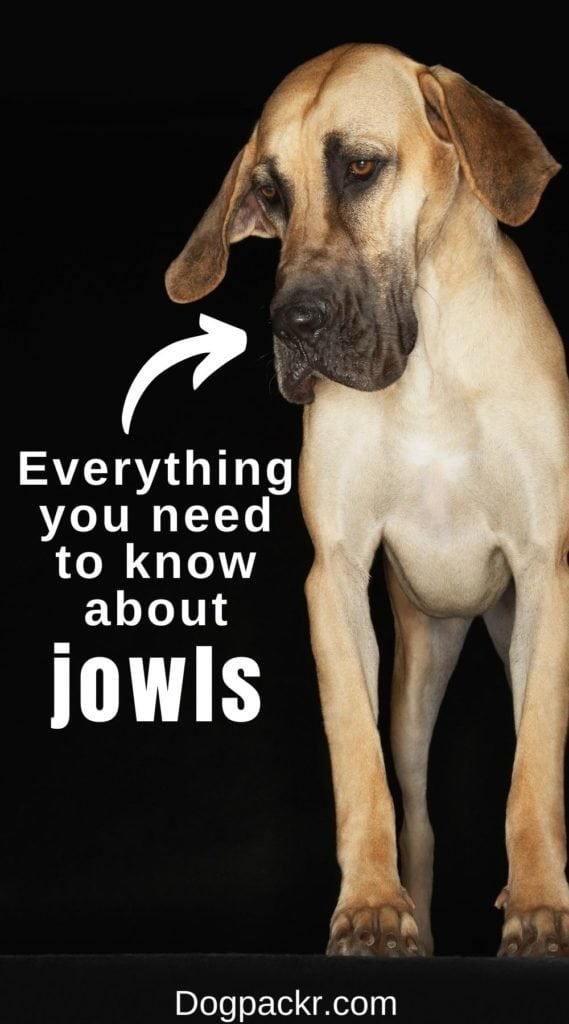
Excessive Drooling in Dogs
Dogs with big jowls tend to drool more than other dogs. But sometimes it seems to be a lot more than usual.
There are lots of reasons why your dog might be drooling more than usual.
First, if something has become stuck in your dog’s mouth or teeth, that could cause excessive drooling. This is a very common problem, and the first thing you should consider if you find your dog drooling much more than is normal.
He could also have dental problems, like gum disease. It’s important to brush your dog’s teeth daily or give him something to chew to clean his teeth himself. The best way to deal with gum disease is by preventing it in the first place! If you do suspect he has a dental problem, give your vet a shout.
Growths on the inside of their mouths and gastric issues can also cause excessive drooling.
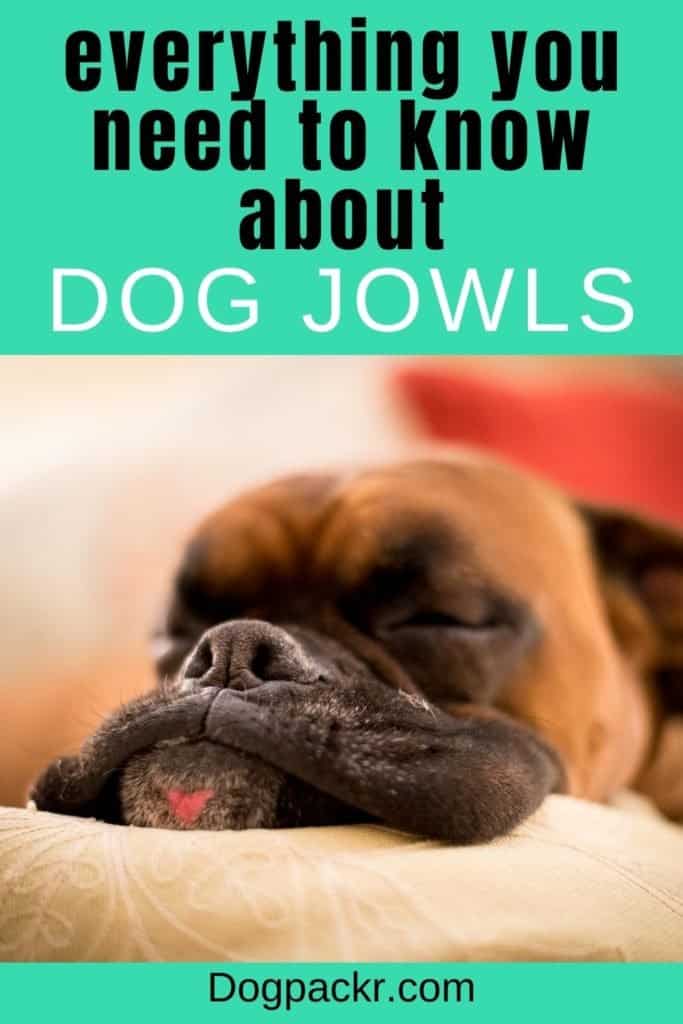
Dog Jowls Swollen Red
If you notice your dog’s jowls are swollen, take a good look at his mouth. Check for any punctures from porcupines, for example. Your dog could also be experiencing an allergy attack if his jowls are swollen and red.
Abscesses, tumors, and dental problems are all other causes for facial swelling. If you notice your dog’s jowls are swollen, it might be time to visit your vet.
Dog Jowls Drooping on One Side
If your dog’s jowls are drooping but only on one side, there could be some nerve damage in your dog’s face.
If you notice one side of your dog’s jowls drooping, you should definitely bring him to the vet. Your vet will check your dog for damage from physical trauma, ear infections which can actually affect a dog’s facial nerves, or low thyroid function.
Dog Jowls Bleeding
The first thing to check for if your dog’s jowls are bleeding is whether he’s cut himself on anything. Depending on the severity of the cut, he may need to see a vet.
Other causes for bleeding jowls could be lip fold dermatitis, objects stuck in your dog’s mouth, or gum disease.
Itchy and Dry Dog Jowls
If your dog has itchy and dry jowls, lip fold dermatitis could be the culprit. It could also be that he got into something that’s irritated his mouth, like harsh cleaning products or allergens.
Skin conditions can also cause your dog’s jowls to be dry or itchy, as well as bacterial infections.
If you notice your dog is scratching his jowls and that they are dry, bring him to the vet. Your vet will ask for any other symptoms, like changes in appetite and behavior to help narrow down the problem.

Oral Papillomavirus in Dogs
This disease, also known as oral warts, presents itself as small benign tumors in and around your dog’s mouth.
It’s usually passed from dog to dog if they share the same toys or food and water bowls. It tends to occur much more often in younger dogs, as their immune systems have not yet fully developed.
Usually oral papillomavirus doesn’t require treatment, unless the tumors become infected. In this case, the tumors will usually be either surgically removed, or frozen off.
Cleaning Dog Jowls
Although your dog might be touchy about having his mouth cleaned, it’s important to prevent the mouth and jowl issues noted above. It’s best to start handling your dog’s mouth early in their life, and to use lots of positive reinforcement.
To clean your dog’s jowls, all you have to do is take a damp cloth and wipe him down. You can also take this opportunity to brush his teeth, which will help prevent anything getting stuck in his jowls.
Conclusion
Dogs’ jowls are cute, there’s no doubt about it. And more than that, they serve an important purpose for your dog.
But they also require proper care. Brushing your dog’s teeth frequently reduces the risk of oral and dental problems. And keeping his jowls clean will help with irritation and the possibility of infection.
Infections, nerve damage, and allergies can be quite painful and uncomfortable for your dog. That’s why you should be sure to take care of his oral health, and keep his jowls clean. Try to start handling around his mouth as early in his life as possible, and have lots of treats on hand. Your dog may not love it, but he’ll be healthier and happier with a clean bill of health!
Speaking of dog mouth, keep reading here:
- Do dogs get tired of barking?
- How to stop your puppy’s biting habit for good
- Why do dogs bark at night?
*Disclosure: This post may contain affiliate links, meaning, I get a commission if you decide to make a purchase through one of my links, at no cost to you.

